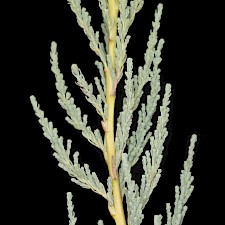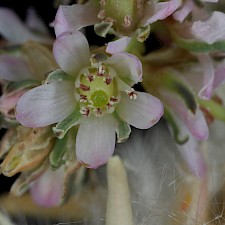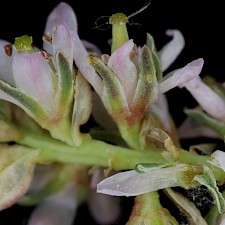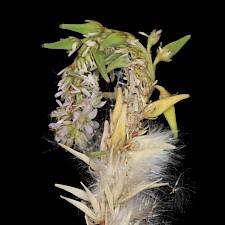False tamarisk
Botanical Name
Myricaria germanica
Family
Tamaricaceae (tamarisk)
Also known as
German tamarisk
Where is it originally from?
Eurasia
What does it look like?
Deciduous shrub (<1.5 m) with upright branches and small, narrowly triangular leaves (<5.5 mm x 1.6 mm) held close to its branches that appear bluish-green due to salt secretions on the underside. Small, pink, 5-petalled (3 mm) flowers are in hanging clusters from January, and are followed by small grey capsules containing seeds (0.7-0.9 mm, Feb-Mar).
Are there any similar species?
Chinese tamarisk (Tamarix chinensis) and T. parviflora are very similar.
Why is it weedy?
Alters the natural environment of stony river beds.
How does it spread?
Seeds are spread by wind and water.
What damage does it do?
Reduces the habitat available for birds that nest in braided riverbeds, while also providing cover for the predators that attack them.
Which habitats is it likely to invade?
Stony riverbeds.
What can I do to get rid of it?
1/ Physical removal: Hand pull. Some plants readily regrow from stems and branches, in these cases all large foliar material needs to be removed from the site
2/ Cut and paste with Metsulfuron gel (10 g/l).
3/ Foliar spray with metsulfuron plus adjuvant (penetrant) at recommended label rate for woody weeds.
CAUTION: When using any herbicide or pesticide, PLEASE READ THE LABEL THOROUGHLY to ensure that all instructions and directions for the purchase, use and storage of the product, are followed and adhered to.
What can I do to stop it coming back?
Regularly revisit the site to check for regrowth and control the plant using the above suggestions prior to seeding.







